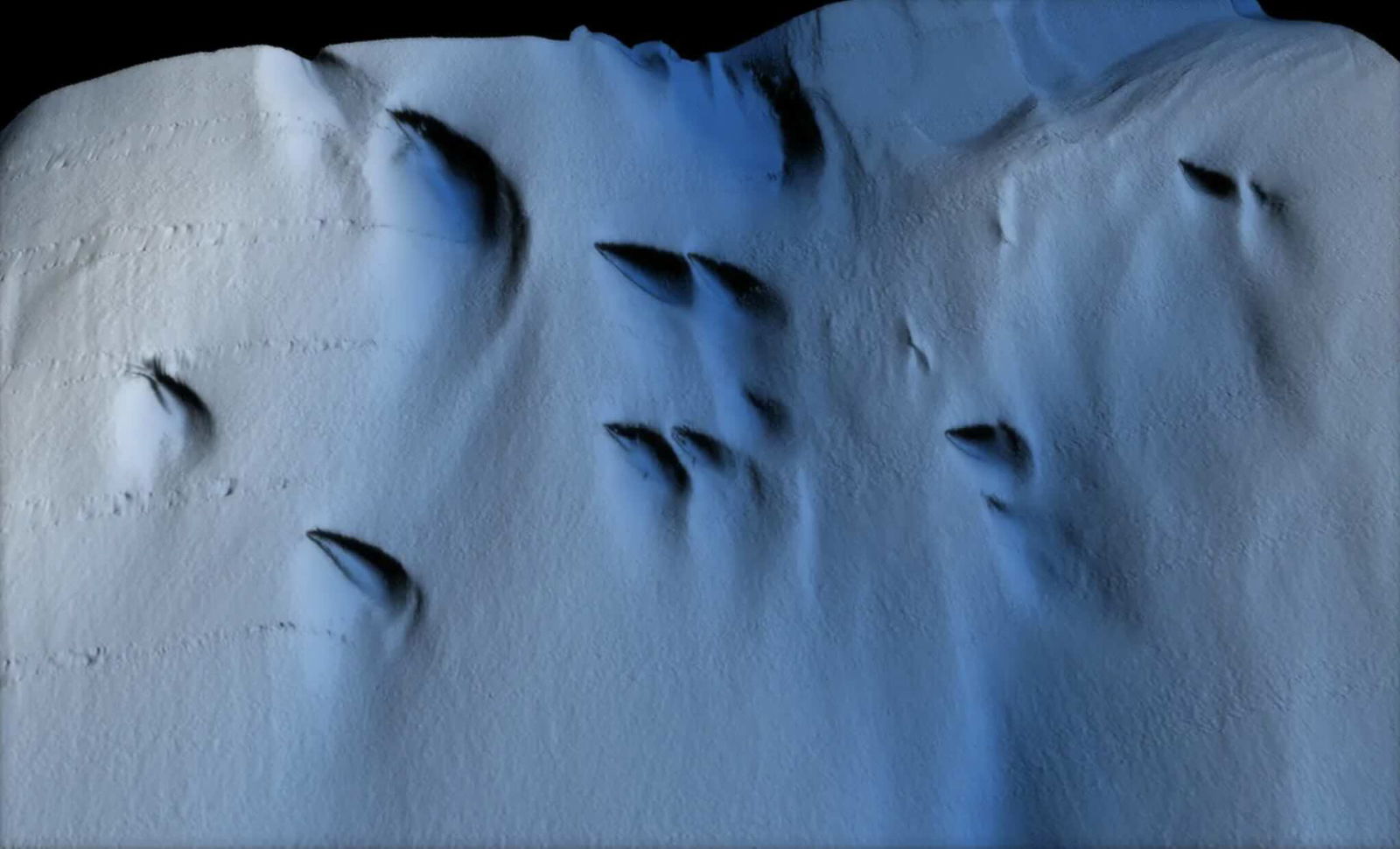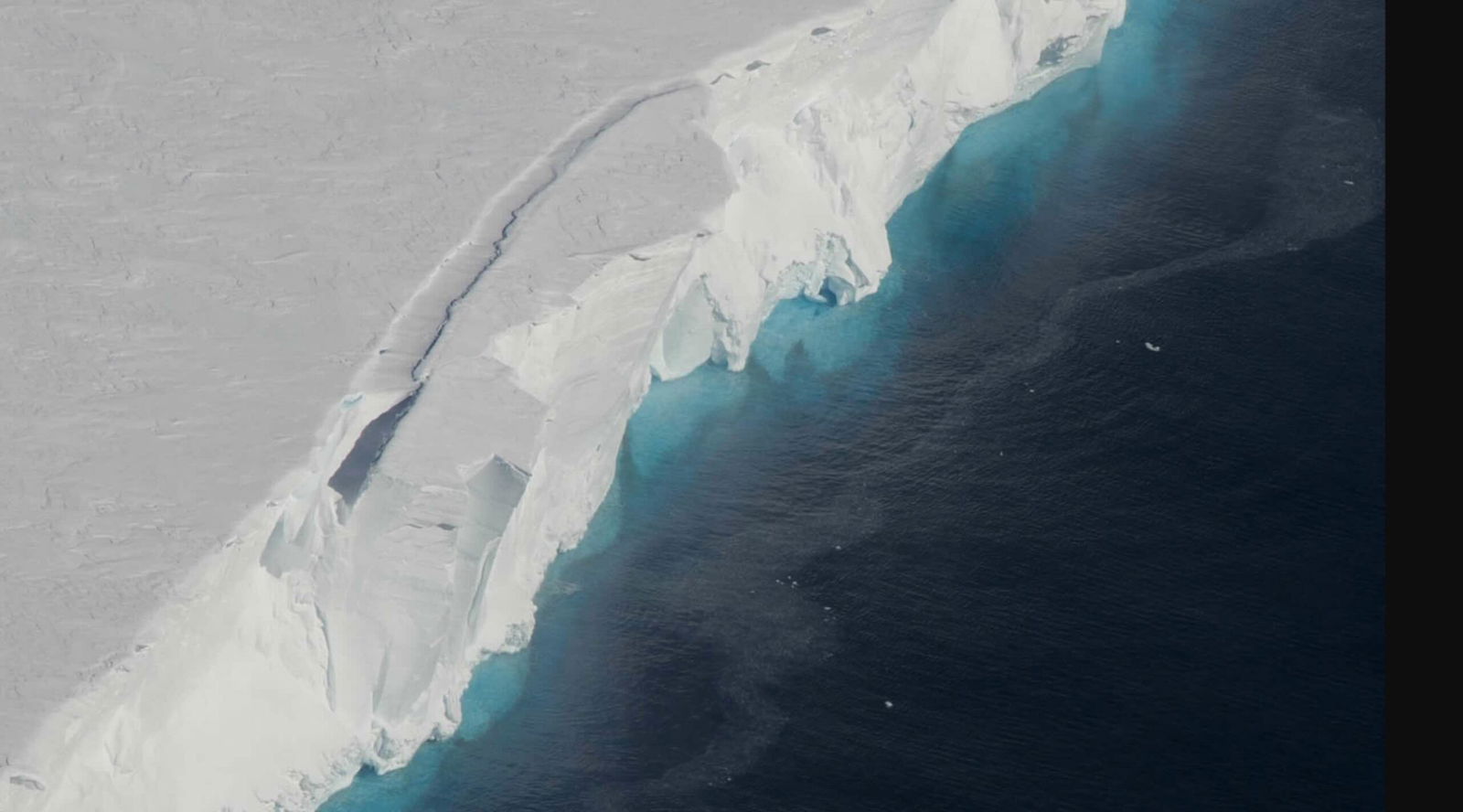New imagery from beneath Antarctica’s Dotson Ice Shelf obtained by an underwater robot has revealed previously unseen features, some of them hundreds of feet long, that provide scientists an unprecedented look at the dynamics of the southernmost continent’s ice shelves.
The recent findings reveal how ocean temperature and circulation are changing, which contributes to the steady increase in melting observed on Antarctica’s ice shelves in recent years, as well as to the rise of global sea levels.
With the help of advanced capabilities that include the use of undersea robots, scientists are now assembling a clearer picture than ever before of the dynamics of melt occurring at the ice base of West Antarctica’s Dotson Ice Shelf.
Basal Melt Processes and Ice Shelf Stability
Melt rates beneath Antarctic ice shelves often show remarkable variability. One factor that influences this process, one that scientists have focused on in recent years, is how warmer salt water interacts with the ice along the base of the continent’s ice sheets.
One significant mechanism that contributes to this mixing of warm water into the ice-ocean boundary is turbulence resulting from shear-driven mixing. Another is vertical convection, which includes a process known as double-diffusive convection, although these generally produce lower melt rates. However, when combined, these processes have now been revealed to produce uniquely shaped features on the base of the ice, which include the formation of what are sometimes very large basal channels and terraces.
Due to varying oceanic conditions, ice can sometimes melt at different rates even along the same ice shelf. This appears to be caused by factors that include not only ocean temperature but also the speed of ocean water’s movement, both of which contribute to diverse formations of natural features along the base of Antarctica’s ice.
According to new findings detailed in a study published in Science Advances, researchers have successfully mapped these changes with the help of an autonomous underwater vehicle (AUV), revealing remarkable and never-before-seen details about the processes that are driving accelerated melt along the continent’s ice shelves.
The Dotson Ice Shelf Mapped in Detail
In the team’s study, the researchers produced high-resolution maps of the underside of the Dotson Ice Shelf, made possible by an AUV that produced data covering close to 140 square kilometers. The new data revealed features such as plateaus, teardrop-shaped formations, and erosion patterns that appear to correlate with the variety of different conditions that contribute to ice melt.
Overall, the research team found that the basal topography of the Dotson Ice Shelf varies significantly between its eastern and western portions. While the ice is thicker and appears to be melting more slowly to the east, on the opposite end, the opposite is the case, with noticeably thinner ice indicating higher melt rates.
In their study, the research team links these variances in ice melt rates to the presence of what is called modified Circumpolar Deep Water (mCDW), which refers to Pacific and Indian Ocean water mixing with other nearby water masses and interacting with the ice base. Faster-moving currents in the western region revealed smooth features on the base of the ice, accompanied by higher melt rates.
In contrast, the central and eastern regions of the ice sheet bore evidence of terraced features, which the research team attributes to warm water intrusions that occur closer to these areas.


Ultimately, the presence of remnant winter water and mCDW mixtures was revealed to produce streaks of temperature and meltwater that significantly influence overall melt rates. The team’s findings through AUV observations help to reveal how future missions may be able to reveal further details about the Antarctic ice base and how shear-driven turbulence and the presence of warm water accelerate melting in the western outflow region.
“This new wealth of processes, all active under a single ice shelf, must be considered to accurately predict future Antarctic ice shelf melt,” the team writes in their recent study. Going forward, ongoing mapping and study of the ice shelf will be crucial in order to refine existing models, in addition to improving our understanding of ice-ocean interactions and their relationship to rising sea levels in the years ahead.
The team’s new study, “Swirls and scoops: Ice base melt revealed by multibeam imagery of an Antarctic ice shelf,” by Anna Wahlin, et al., appeared in Science Advances on July 31, 2024.
Micah Hanks is the Editor-in-Chief and Co-Founder of The Debrief. He can be reached by email at micah@thedebrief.org. Follow his work at micahhanks.com and on X: @MicahHanks.

